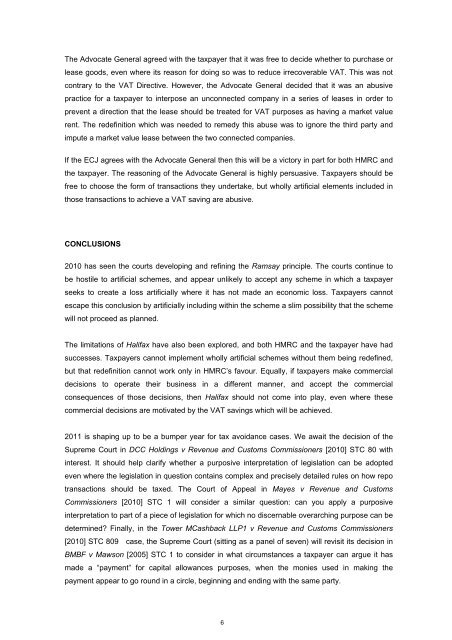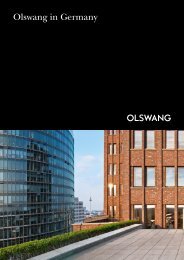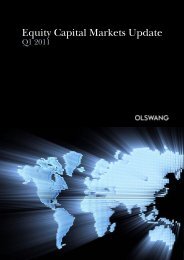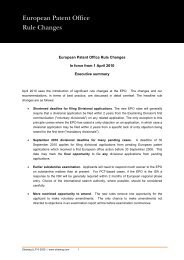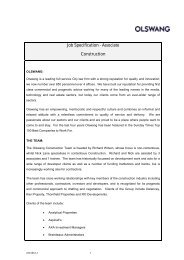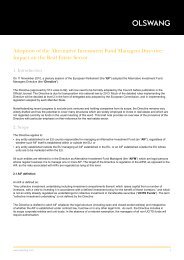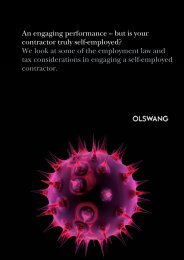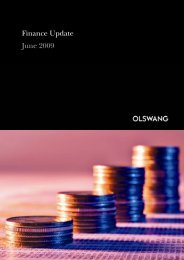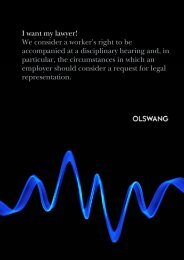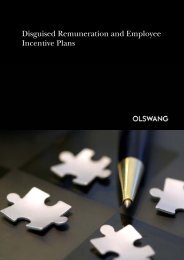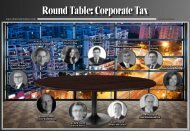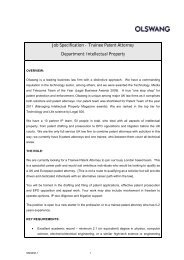Tax Advisor 2010 tax avoidance case law review - Olswang
Tax Advisor 2010 tax avoidance case law review - Olswang
Tax Advisor 2010 tax avoidance case law review - Olswang
You also want an ePaper? Increase the reach of your titles
YUMPU automatically turns print PDFs into web optimized ePapers that Google loves.
The Advocate General agreed with the <strong>tax</strong>payer that it was free to decide whether to purchase or<br />
lease goods, even where its reason for doing so was to reduce irrecoverable VAT. This was not<br />
contrary to the VAT Directive. However, the Advocate General decided that it was an abusive<br />
practice for a <strong>tax</strong>payer to interpose an unconnected company in a series of leases in order to<br />
prevent a direction that the lease should be treated for VAT purposes as having a market value<br />
rent. The redefinition which was needed to remedy this abuse was to ignore the third party and<br />
impute a market value lease between the two connected companies.<br />
If the ECJ agrees with the Advocate General then this will be a victory in part for both HMRC and<br />
the <strong>tax</strong>payer. The reasoning of the Advocate General is highly persuasive. <strong>Tax</strong>payers should be<br />
free to choose the form of transactions they undertake, but wholly artificial elements included in<br />
those transactions to achieve a VAT saving are abusive.<br />
CONCLUSIONS<br />
<strong>2010</strong> has seen the courts developing and refining the Ramsay principle. The courts continue to<br />
be hostile to artificial schemes, and appear unlikely to accept any scheme in which a <strong>tax</strong>payer<br />
seeks to create a loss artificially where it has not made an economic loss. <strong>Tax</strong>payers cannot<br />
escape this conclusion by artificially including within the scheme a slim possibility that the scheme<br />
will not proceed as planned.<br />
The limitations of Halifax have also been explored, and both HMRC and the <strong>tax</strong>payer have had<br />
successes. <strong>Tax</strong>payers cannot implement wholly artificial schemes without them being redefined,<br />
but that redefinition cannot work only in HMRC’s favour. Equally, if <strong>tax</strong>payers make commercial<br />
decisions to operate their business in a different manner, and accept the commercial<br />
consequences of those decisions, then Halifax should not come into play, even where these<br />
commercial decisions are motivated by the VAT savings which will be achieved.<br />
2011 is shaping up to be a bumper year for <strong>tax</strong> <strong>avoidance</strong> <strong>case</strong>s. We await the decision of the<br />
Supreme Court in DCC Holdings v Revenue and Customs Commissioners [<strong>2010</strong>] STC 80 with<br />
interest. It should help clarify whether a purposive interpretation of legislation can be adopted<br />
even where the legislation in question contains complex and precisely detailed rules on how repo<br />
transactions should be <strong>tax</strong>ed. The Court of Appeal in Mayes v Revenue and Customs<br />
Commissioners [<strong>2010</strong>] STC 1 will consider a similar question: can you apply a purposive<br />
interpretation to part of a piece of legislation for which no discernable overarching purpose can be<br />
determined? Finally, in the Tower MCashback LLP1 v Revenue and Customs Commissioners<br />
[<strong>2010</strong>] STC 809 <strong>case</strong>, the Supreme Court (sitting as a panel of seven) will revisit its decision in<br />
BMBF v Mawson [2005] STC 1 to consider in what circumstances a <strong>tax</strong>payer can argue it has<br />
made a “payment” for capital allowances purposes, when the monies used in making the<br />
payment appear to go round in a circle, beginning and ending with the same party.<br />
6


